Soprano Saxophone
The most important aspect to making a saxophone is material selection and craftsmanship.
A saxophone of fine workmanship derives from a master’s years of experience and the pursuit for beauty and perfection.
Production is divided into two categories: body and components. The process for making the body requires repeated welding, hammering and polishing in addition to the installation components such as the “rib” (a brass plate used to group keys together), key posts, rods and keys.
There are nearly four hundred parts on a saxophone and the process of making one is rather lengthy and complicated, this is why it takes a skilled master a whole month just to craft a single saxophone.
-
 01.Mold stamping
01.Mold stampingWith the advancement of time and industrial technology, most of the saxophone’s tubing (neck, body, bow and bell) are obtained by placing a sheet of copper onto a hydraulic punch to cut them out. -
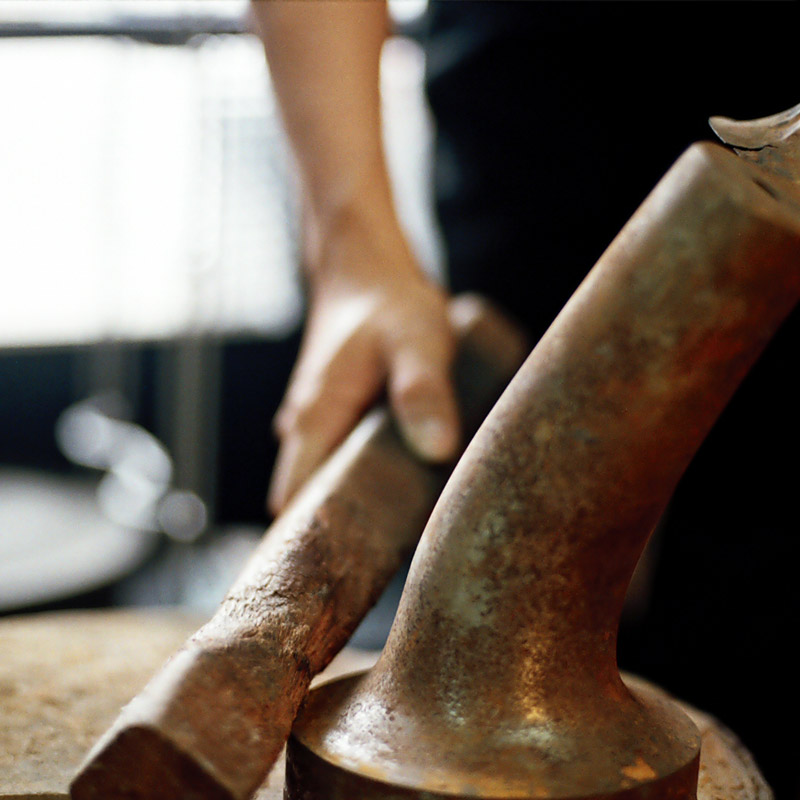 02.Body fabrication
02.Body fabricationThe initial stage of the saxophone begins with the shaping of the bell and the body. After the copper sheet is stamped (cut) according to the desired pattern and welded, it is then placed on the forming rod(an iron mold) and carefully hammered with a wooden mallet. If the hammering process is replaced using a steel hammer, it would cause unwanted stretching and thinning, resulting in an uneven tone in its sound. But before this can happen, it must first undergo the process of annealing (heat treatment)so that the structure does not become too brittle, resulting in ruptures during the hammering process. After two to three hours of repeated hammering and shaping, it results in an increase in the density of the structure. Not only does this provide with better sounding harmonics but also heightens the resonance of the saxophone. -
 03.Lathe processing
03.Lathe processingThe saxophone posts and rods are formed by lathe processing; buttons with sharp angles are also cut using this process to showcase the beauty of these intricate parts. -
 04.Tone hole drawing
04.Tone hole drawingThe saxophone’s tone hole is formed by placing a guide rack which aligns the position where the tone holes will be pulled out by machine. After the tone holes are formed, there will be issues of unevenness around their rims. It must be adjusted and machined in order to meet the proper height requirements. -
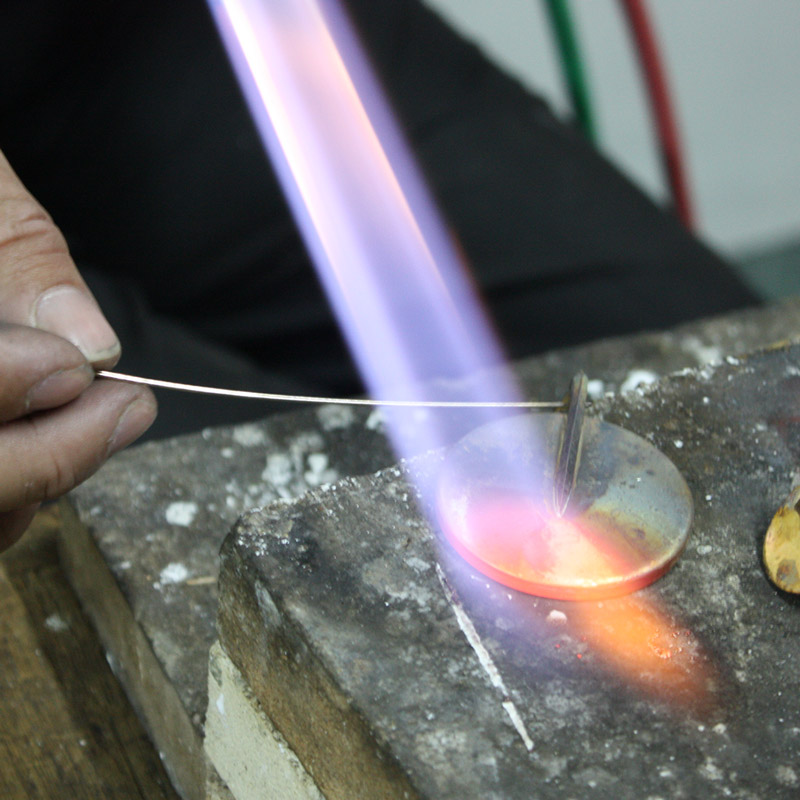 05.Soldering
05.SolderingSoldering: When key posts are soldered to the body, it is coated with flux (hydrochloric acid) and then soldered at a low temperature of 150 ° C ~ 200 ° C. The purpose is to avoid heat damage to the saxophone’s body, which affects the overall sound.
Silver soldering: When soldering keys, key cups and rods, a cleaning agent known as borax is first used to remove impurities. Flux is then coated and silver soldered at a high temperature of 800 °C ~ 1000 °C. -
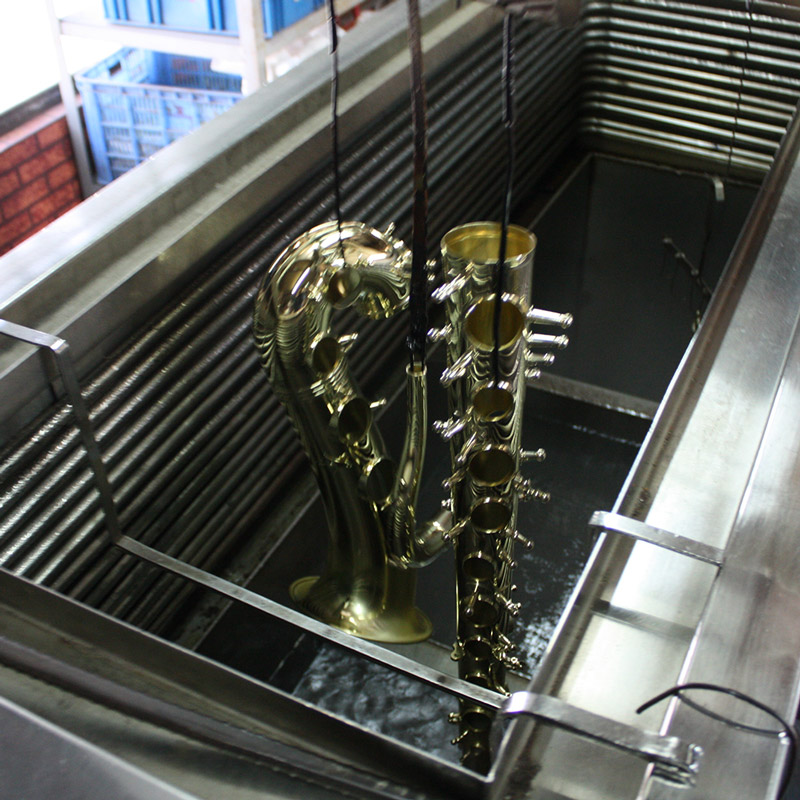 06.Polishing
06.PolishingIn order to increase the beauty and overall aesthetics of the saxophone, the entire body and all individual components need to be polished. Masters usually use a buffing wheel complimenting stone blocks to increase the surface flatness as well as to brighten the parts. Surface finishes are available in both glossy and matte. -
 07.Cleaning
07.CleaningAfter polishing, the saxophone is given an ultrasonic bath. This removes any residual dirt and grease so coating materials may better adhere to its surface. -
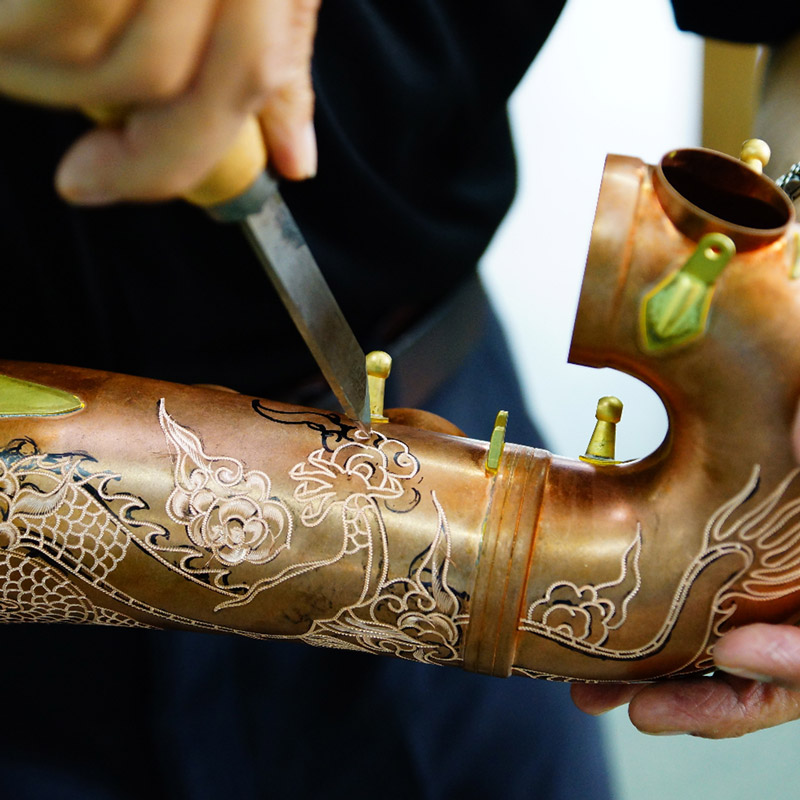 08.Saxophone finishes
08.Saxophone finishesSurface finishes are available in lacquered, electroplated and sandblasted. In addition to bringing out the beauty of the saxophone and protecting it against corrosion, the coating of different materials can also influence the final sound produced. -
 09.Assembly
09.AssemblyAssembling the saxophone requires the utmost experience and skill in the entire manufacturing process. After polishing there will be variances in the precision of the parts, how a master is able to make adjustments for a perfect fit relies of their years of experience. -
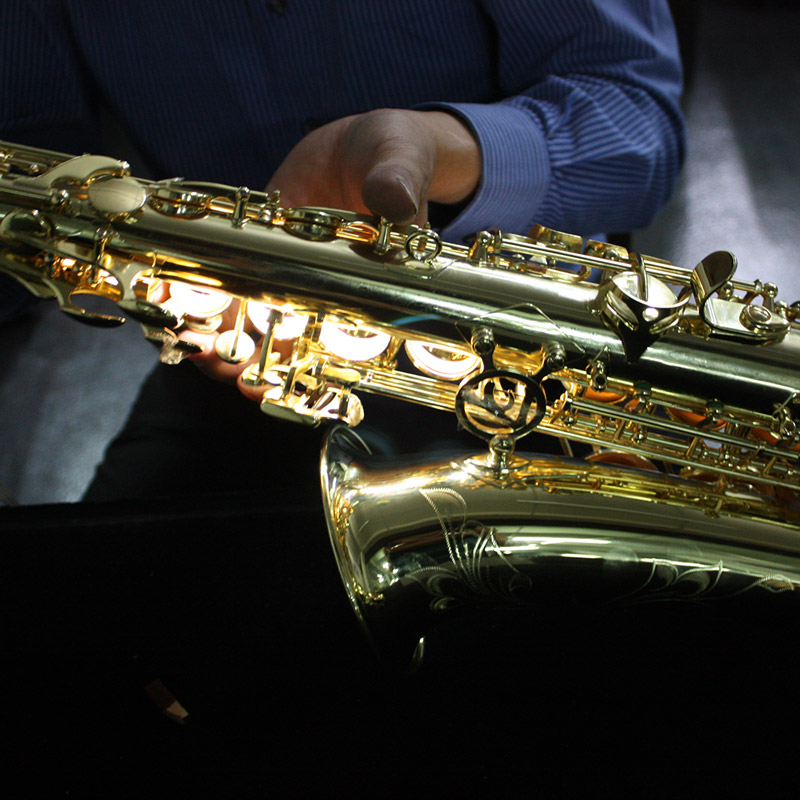 10.Inspection and tuning
10.Inspection and tuningA small lamp is inserted into the instrument’s cavity. Keys are pressed to inspect for light leakage at the gaps between the tone holes and the pads on the key cups. If the gaps are not properly sealed, it would cause air leaks and affect the instruments playability. In the past when this was yet to be a common practice, masters had to smoke up to two packs of cigarettes and constantly blow smoke against the saxophone, using smoke leaks as an indication. The masters loved this part of the job because there was never an excuse needed in order to smoke.




